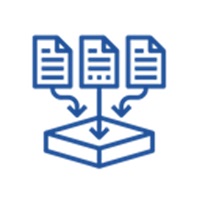HOW RENEWABLE ENERGY CERTIFICATES/SOLAR OFFSET WORKS
Who is Eligible?
To meet government eligibility rules you must be the owner or lessee of a small-scale solar energy and/or wind power system that:
- Is located in Alberta
- Is connected to the Alberta electricity grid
- Is over 4 kW and under 5 MW in size
- Started generating after Jan 2, 2012
Some grants and incentives prevent you from creating carbon offset credits - see Solar Offset's post about this here. To check your eligibility, complete our no-obligation sign up.
WHAT ARE CARBON OFFSETS?
 |
 |
 |
 |
 |
| One carbon offset credit represents one tonne of CO2 emissions reduction. | When a clean energy system - such as energy from a solar panel or wind turbine - avoids one tonne of CO2 production, it can create one carbon offset credit. | That credit can then be sold to industrial facilities that are unable to meet regulated emission reduction targets. | The Alberta government requires rigorous data collection, calculation, storage, reporting, and independent auditing to international standards to create carbon offset credits. | This process ensures that the greenhouse gas emission reductions are both real and permanent. |
Why are Carbon Offsets valuable?
Alberta's provincial government legally requires large industrial polluters to reduce their emissions; however, for some industries, achieving this target is challenging due to the nature of their operations. This is where carbon offset credits come in.
Companies that cannot reduce their own emissions can choose to instead purchase carbon offset credits to meet their obligations. As such, a thriving carbon market has developed in Alberta, with tens of millions of carbon offset credits created and sold since the market was established.
Solar Offset turns your clean energy into verified carbon offset credits and sells them in this market, returning income to you, the system owner, once per year.
How much can I earn?
With Solar Offset, you will make 0.55 carbon offset credits for every 1000 kWh of clean electricity your system generates. The bigger your system, the more credits you can expect to make (although generation varies by location and weather). The more credits you make, the more you get paid.
As a rule of thumb, every 10 kW of system will typically create around 7 carbon offset credits per year. With Solar Offset, can do this for up to 10 years.
To calculate the potential return from your solar energy system:
Try Solar Offsets Carbon Credit Calculator
Future Price of Carbon
The Alberta Provincial Government has announced that, starting in 2023, the price of carbon will rise from the current $65/tonne by $15/tonne every year until it reaches $170 per tonne in 2030:
- 2023: $65
- 2024: $80
- 2025: $95
- 2026: $110
- 2027: $125
- 2028: $140
- 2029: $155
- 2030: $170
It's important to note that the value of carbon offset credits is not the same as the 'carbon price'. Typically, carbon offset credits sell for around 70% to 90% of this amount - although it all depends on market dynamics.
Solar Offset pays you, the system owner, a majority percentage of the sales price.
This means that as the price of carbon rises, so does the revenue you make from your offset credits.
